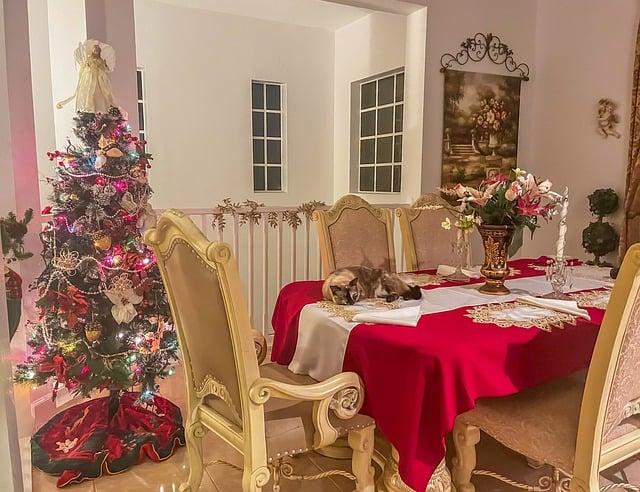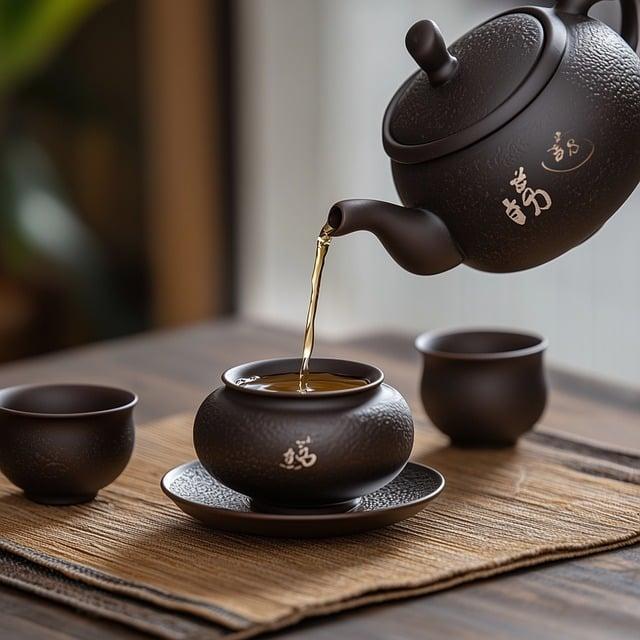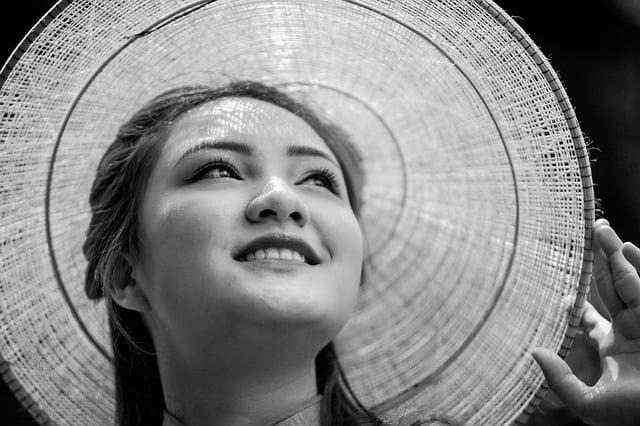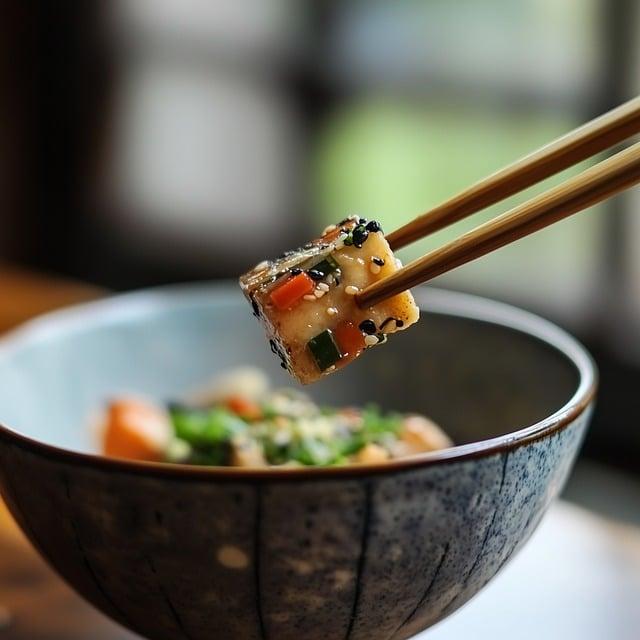In a bustling Asian city, the scent of roasted chestnuts filled the air as families prepared for Christmas. In a cozy apartment, Mei hung colorful lanterns alongside twinkling lights, blending traditions. Her grandmother shared stories of the Winter Solstice, while her father cooked a fusion feast of dumplings and turkey. Neighbors exchanged gifts, laughter echoing through the streets. For them, Christmas was a tapestry of cultures—celebrating love, family, and the joy of togetherness, reminding everyone that the spirit of the season transcends borders.
Table of Contents
- Exploring Diverse Christmas Traditions Across Asian Cultures
- Festive Foods: Culinary Delights That Bring Families Together
- Unique Customs and Rituals: How Different Communities Celebrate
- Gift-Giving Practices: Meaningful Exchanges in Asian Christmas Celebrations
- Q&A

Exploring Diverse Christmas Traditions Across Asian Cultures
Christmas in Asia is a vibrant tapestry woven from various cultural threads, each adding its unique flair to the festive season. In the Philippines, the celebration kicks off with the “Simbang Gabi”, a series of dawn masses leading up to Christmas Day, where families gather to enjoy traditional delicacies like puto bumbong and bibingka. Meanwhile, in Japan, Christmas is more of a romantic holiday, where couples exchange gifts and enjoy a special meal, often featuring KFC as a quirky tradition. In South Korea, Christmas is celebrated with a blend of religious and secular customs, where people decorate trees and exchange gifts, while also participating in church services.
Beyond these unique practices, other Asian cultures also embrace the spirit of Christmas in their own ways. In India, particularly in Goa, the holiday is marked by vibrant parades and the decoration of homes with stars and crèches, reflecting the local blend of Christianity and Indian traditions. In Vietnam, Christmas is celebrated with a festive atmosphere, where streets are adorned with lights and decorations, and families gather for a special meal that often includes roast pork and sticky rice. Each of these traditions showcases the rich diversity of celebrations, highlighting how Christmas can be a time of joy, togetherness, and cultural expression across the continent.

Festive Foods: Culinary Delights That Bring Families Together
During the festive season, families across Asia come together to celebrate Christmas with a rich tapestry of culinary traditions that reflect their unique cultures. In the Philippines, the holiday is marked by the famous **Noche Buena**, a midnight feast that features a variety of dishes such as **lechón** (roast pig), **hamón** (sweet ham), and **bibingka** (rice cake). Similarly, in South Korea, Christmas is often celebrated with a special meal that includes **fried chicken** and **cake**, symbolizing a blend of Western influence and local flavors. Each dish tells a story, bringing families closer as they gather around the table to share not just food, but also laughter and memories.
In other parts of Asia, such as Japan, Christmas has evolved into a unique celebration characterized by its own culinary delights. The Japanese often indulge in **Christmas cake**, a light sponge cake topped with strawberries and whipped cream, while enjoying a festive meal that may include **KFC**, a quirky tradition that has become synonymous with the holiday. Meanwhile, in India, Christmas is celebrated with a feast that showcases a fusion of flavors, featuring dishes like **biryani**, **cake**, and **plum pudding**. These diverse culinary practices not only highlight the rich cultural heritage of each region but also emphasize the importance of togetherness, as families unite to savor the festive flavors that make this season truly special.

Unique Customs and Rituals: How Different Communities Celebrate
Across Asia, Christmas is celebrated with a vibrant tapestry of customs and rituals that reflect the rich cultural diversity of the continent. In the Philippines, the festive season kicks off with the “Simbang Gabi”, a series of early morning masses leading up to Christmas Day. This tradition is often accompanied by the enchanting sight of parols, star-shaped lanterns that illuminate homes and streets, symbolizing the Star of Bethlehem. Meanwhile, in Japan, Christmas is more of a romantic holiday than a religious one, where couples exchange gifts and enjoy a special meal, often featuring KFC, a quirky tradition that has become a beloved part of the celebration.
In South Korea, Christmas is recognized as a public holiday, and many people partake in the festivities by attending church services and enjoying festive meals with family. The holiday is marked by the exchange of gifts and the decoration of Christmas trees, often adorned with colorful ornaments and lights. In contrast, in countries like Vietnam, Christmas is celebrated by both Christians and non-Christians alike, with vibrant street decorations and lively gatherings. Here, the holiday is often associated with the “Bánh Chưng”, a traditional rice cake, symbolizing the earth and the sky, which is enjoyed during the festive season, showcasing the unique blend of cultural heritage and modern celebration.

Gift-Giving Practices: Meaningful Exchanges in Asian Christmas Celebrations
In many Asian cultures, the act of gift-giving during Christmas transcends mere material exchange; it embodies deep-rooted traditions and values that strengthen familial and communal bonds. Gifts are often chosen with great care, reflecting the recipient’s personality and preferences. This thoughtful approach fosters a sense of connection and appreciation, making the act of giving a heartfelt expression of love and gratitude. Common gifts include:
- Homemade treats: Traditional sweets and snacks that evoke nostalgia and warmth.
- Personalized items: Customized gifts that show the giver’s effort and thoughtfulness.
- Charitable donations: Contributions made in someone’s name to honor their values and beliefs.
In addition to personal gifts, many communities engage in collective exchanges that highlight the spirit of togetherness. These practices often involve sharing meals, participating in community events, and exchanging small tokens of appreciation among neighbors and friends. Such gatherings not only enhance social ties but also create a festive atmosphere filled with joy and camaraderie. Popular communal gift-giving practices include:
- Secret Santa: A fun and engaging way to surprise friends and colleagues with anonymous gifts.
- Potluck dinners: Where everyone brings a dish to share, fostering a sense of community and collaboration.
- Charity drives: Encouraging individuals to donate gifts or essentials to those in need, reinforcing the spirit of giving.
Q&A
-
Do all Asians celebrate Christmas?
No, not all Asians celebrate Christmas. The celebration varies widely depending on cultural, religious, and regional factors. While many Christians in Asia observe Christmas, others may celebrate different festivals or holidays during the same period.
-
What are some common Christmas traditions among Asian Christians?
Asian Christians often incorporate unique traditions into their Christmas celebrations, such as:
- Attending midnight Mass or church services
- Decorating homes with lights and Christmas trees
- Sharing festive meals with family and friends
- Exchanging gifts
-
How do non-Christian Asians celebrate during the Christmas season?
Non-Christian Asians may celebrate Christmas in a more secular manner, focusing on:
- Enjoying the festive atmosphere and decorations
- Participating in community events and gatherings
- Shopping and exchanging gifts as part of the holiday spirit
-
Are there any unique Asian Christmas foods?
Yes, many Asian cultures have their own special dishes for Christmas, such as:
- Lechon (roast pig) in the Philippines
- Christmas cake in Japan
- Various rice and noodle dishes in different regions
As the holiday season unfolds, the diverse celebrations among Asian communities remind us that Christmas is more than a date on the calendar—it’s a tapestry of traditions, love, and unity. Embrace the spirit of togetherness, wherever you are.

大家好,我是彼得潘,專業的手法身體治療師。我喜歡探索和研究各種主題,並透過與人工智慧的合作分享專業、實用、有趣的文章。我們定期進行人工審核,以確保內容的準確性。如果您發現文章中有任何不準確的地方,請隨時與我們聯繫,我們會及時糾正。您可以透過 [email protected] 與我們聯繫。



